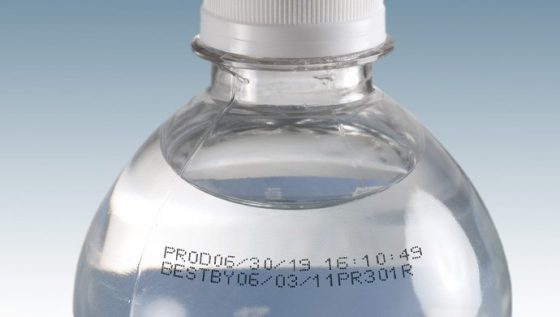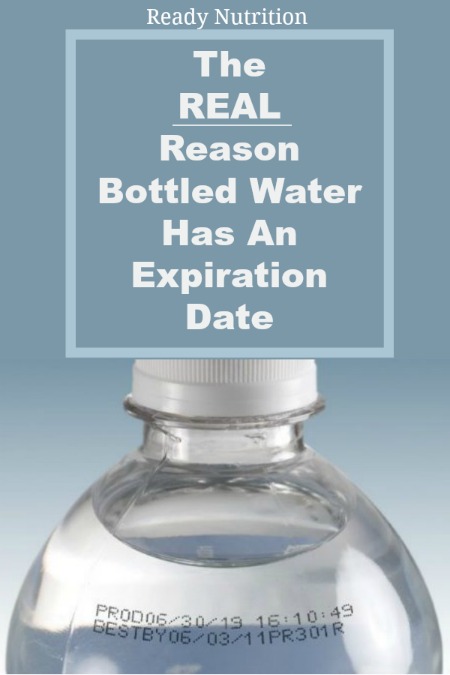
Bottled water is a popular item to store in case of an emergency, and for good reason. It is normally readily available and water should be able to be stored forever, right? So then why is there an expiration date on bottled water?
Of course, water doesn’t expire, but you should still check the expiration date on the bottle before you drink it. According to Live Science, there a few different reasons why water bottles come with expiration dates, and the first one, you shouldn’t worry too much about, but the second one should make you think twice.
Since water is a consumable product, regulations and laws require bottles to be stamped with an expiration date even though water doesn’t ever “expire.” Rational people understand this, but the government feels the need to step in and protect us from ourselves anyway. The only reason they were put there in the first place was that a 1987 New Jersey state law required all food products to display an expiration date, including water, according to Mental Floss. Since it wasn’t very cost effective for companies to label and ship batches of expiration-dated water to one state alone, most bottled water producers simply started giving every bottle a two-year sell-by date—no matter where it was going. Because the law is rather arbitrary, don’t worry too much about drinking expired water just because a law demands a company stamp the bottle. However, the expiration date serves more of a warning about the bottle itself than the water contained inside.
Unlike the water itself, which has existed on Earth for 4.5 billion years, that manufactured plastic bottle only has so much time before it “goes bad.” The plastic bottles that water comes packaged in (usually polyethylene terephthalate (PET) for retail bottles and high-density polyethylene (HDPE) for water cooler jugs). The bottle will eventually fail (expire) and begin to leach plastic chemicals into the water with an effect on the overall taste. So if you happen to find a water bottle well past its printed expiration date in your home, it’s probably safe to drink, if you don’t mind the chemical bits of bottle which have broken down and are now swirling around in it, but you should also be aware of the fact that it might not be super fresh tasting anymore either. But in a life and death situation, you could drink well-expired bottled water and probably be alright. But there are many options for storing water that could help you avoid drinking the plastic.
PLASTIC CONTAINERS
That said, storing water for a disaster or emergency should be done in only food grade containers. You can avoid plastics such as HDPE and PET to prevent the leaching of chemicals, but those are, technically “food grade” plastics (according to the FDA – so take that with a grain of salt) and you may not have a way around it. Also, choosing BPA-free containers will be safer as well. If water is not stored correctly, it can (and will) become toxic. You can minimize the chances of plastic chemicals leaching into your water if you store it in a cool dry place. Direct sunlight will break down the plastic more quickly. But if there is any doubt in your mind at all about the integrity of your container, trust your gut over the labels and do not store water in that container even if the FDA says its safe to do so. There are plenty of other options.
One water storage suggestion is a 55-Gallon Rainwater Collection System. Some are made from FDA approved polyethylene resin (and are also BPA free). This particular one has a plastic barrel and the capacity to hold enough water to supply a family of 4 with over 13 days worth of water, or 2 people nearly a 30 day supply of water. The dark blue color of this 55-gallon barrel restricts light and helps control the growth of harmful algae and bacteria.
GLASS CONTAINERS
You can also use glass containers to store water. There is no chance that the container will leach and if you’ve got some extra mason jars laying around after canning, it may be a good way to put those to some good use. Of course, the major disadvantage of glass is that it’s not only heavy, it is pretty easy to break. However, steps can be taken to minimize the chances of the glass breaking, such as wrapping the glass containers with newspaper or cardboard. Check out these highly-rated 18 oz leak-proof glass bottles for your water storage needs if you decide glass is right for you.
A WELL
The best way to ensure you have enough water on hand and a replenishable supply of the water is to get a mechanized well. This is my family’s method of “storing” water. We don’t actually have to store any at all, though, and can focus on building our supply of ammunition and non-perishable foods because of it. Of course, we have the well on a pump that works with electricity, however, we also have devised a way to retrieve water from the well in the event of a crisis or disaster in which we have no power. It is important to keep in mind that this is more of a water generation system than “storage” system, but its the most effective for long-term disasters and therefore worth mentioning. Since wells both store and produce water, if you can build one on your property, you should have a good source of drinking water during an emergency. As the website, Skilled Survival put it: this is highly dependent on how much of your well is mechanized. But the fact remains: someone with a working water well is going to survive a disaster far easier than the rest.


We keep a good supply of the 5 gallon jugs (The kind you refill at Walmart or Lowes). We continually go through them, to make sure the water doesn’t go bad, and just refill 1 or 2 every week when we are getting groceries. To make sure they are water tight, we buy the snap on (one time use only) caps from Amazon: https://www.amazon.com/dp/B01IRXBUYG
It is foolish to solely rely upon a well since during a “natural disaster” Well’s can easily be damaged or destroyed so be smart and still back it up with a supply of bottled or “canned” water.
Ed